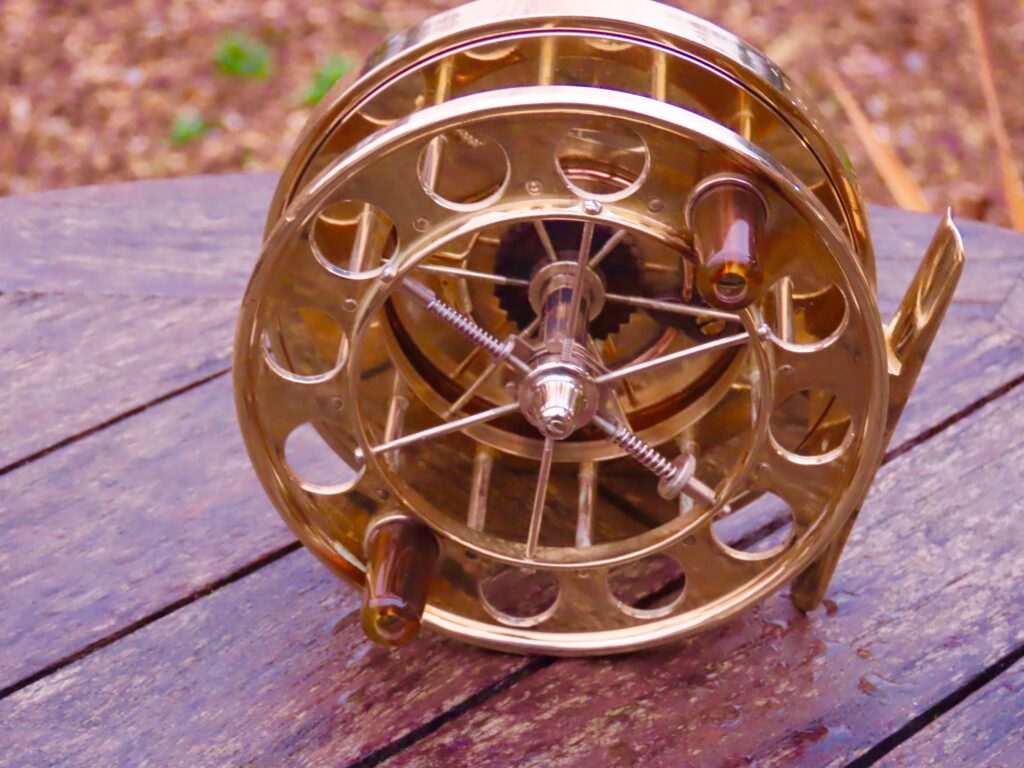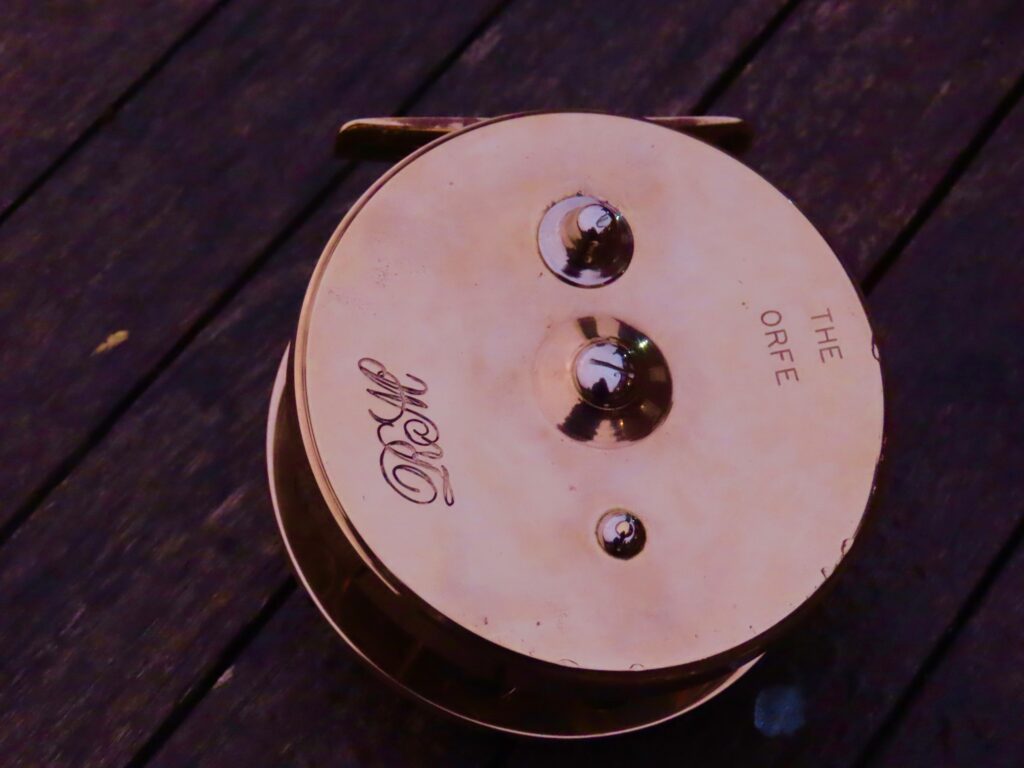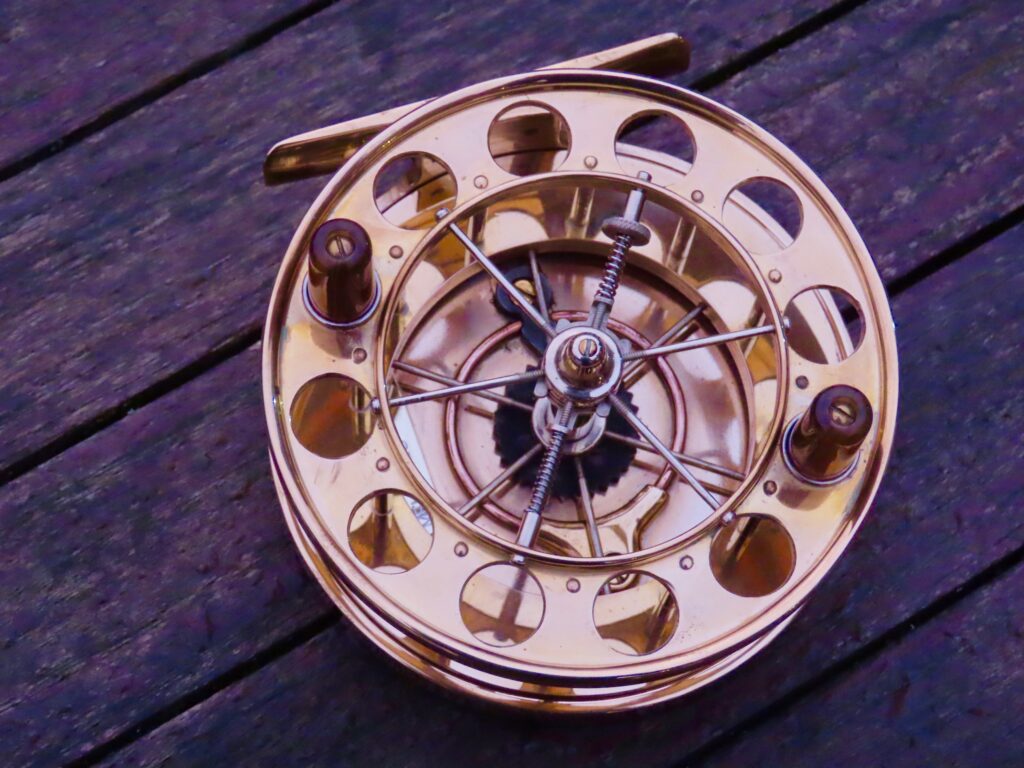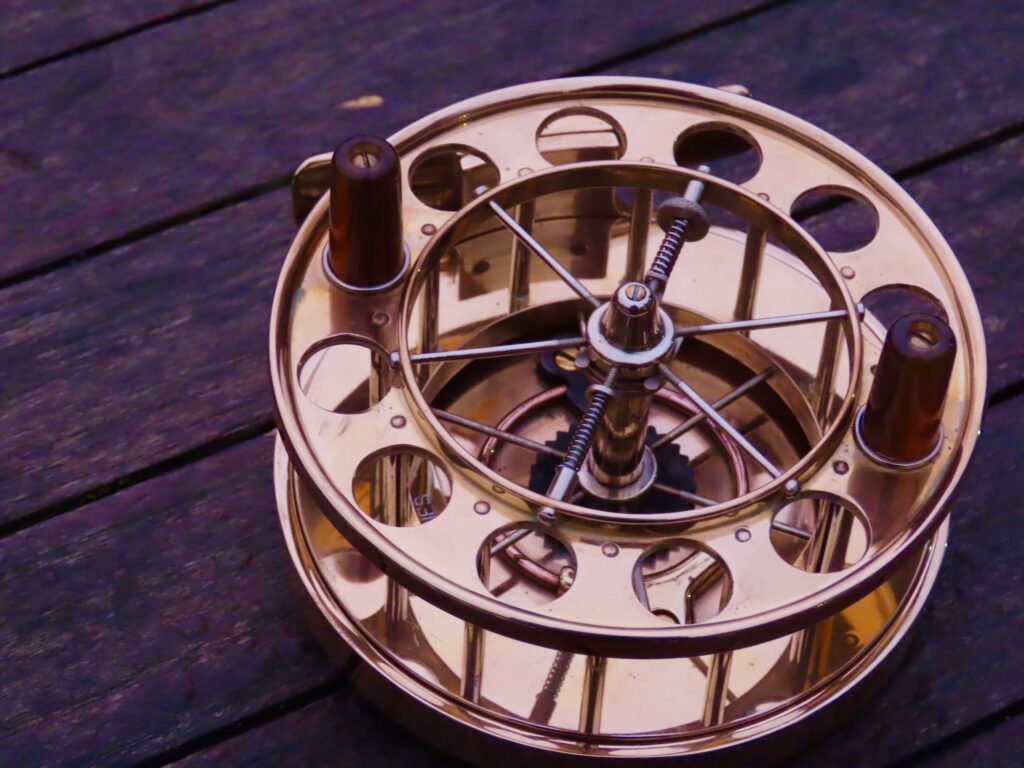I have known Richard Masters for many years now, and have admired him as a man and as an angler. He was recently retired when I first fished with him, but he had been an engineer in the Midlands for much of his life, working with the notorious British Leyland, which of course is a story in itself.
His training, occupation and passion for angling soon combined to lead him towards the making of centrepins, as you might expect from a man brought up on Mr Crabtree. Between 1990 and 2010, Richard made, he thinks, around fifty ‘pins, beautiful reels that next to never come on the market. Most of these were one-off orders, immensely difficult and time-consuming to make for a man working in a shed on a very small scale. Much of his energy was also spent renovating older reels that had fallen on hard times and needed root and branch TLC. Most of these were Aerials that he brought back to a successful fishing life.
Throughout all the sessions we have enjoyed together I have always pulled Richard’s leg mercilessly, demanding he give me one of his creations, in return for some decent tench, bream, pike and barbel I have guided his way. So imagine my delight when two days ago, Richard handed me a mysterious box, with a smile on his face and a twinkle in his eyes.








So, here it is. The Orfe, one of five such reels Richard made back in 1998. The motivation was his lovely wife, Maureen, who asked why she had never been immortalised by a reel in her honour. So, for her, Richard produced this brass beauty and four more besides. Maureen’s own reel, however, was made with mother-of-pearl handles, rather than the ebonite ones on the one I now own.
Of course, Richard said, this reel is not really designed for bankside action. Brass is inordinately heavy, and this beauty itself weighs a pretty hefty sixteen ounces on my scales. I’d like to give it a spin, but probably will not. It is a useful reminder that in the 19th century, brass reels were called winches, and were little more than line reservoirs. It wasn’t ’till the 20th century that reels like the Aerials could be made from cast alloy and aluminium. The strength and lightness of these new ‘pins was one of the reasons that running line fishing could develop in the way it has… though of course, our reel guru John Stephenson knows far more about this than I do!
It was pure chance that this stunning piece of craftsmanship came back into Richard’s hands, and I am overwhelmed that he should pass it on to me. Dear friend, It will be cherished, I assure you.












